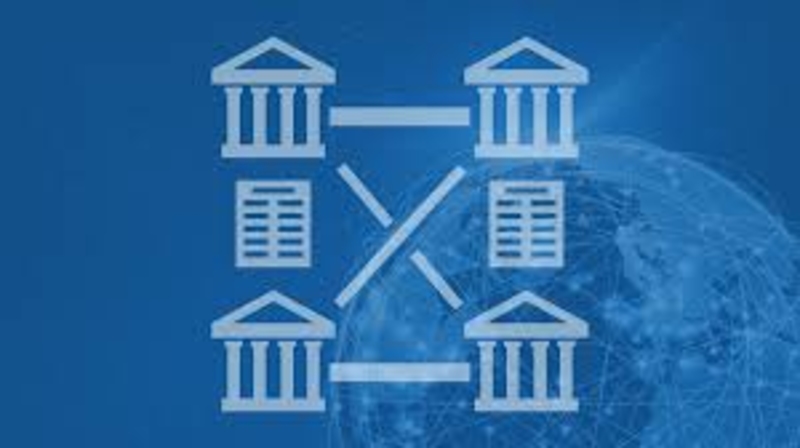If you’re asking, “What is DLT in Blockchain?” you’re not alone. Distributed Ledger Technology (DLT) is transforming the digital landscape, enabling everything from cryptocurrencies to secure data sharing in industries like healthcare, finance, and beyond. In this article, we at ABC will break down exactly what DLT is, how it works, and why it’s a game-changer. Whether you’re new to the concept or looking to deepen your understanding, this guide will provide all the essential information about DLT, including its benefits, challenges, and real-world applications.
What is DLT in blockchain?
Distributed Ledger Technology (DLT) is a decentralized database that allows multiple participants across various locations to have synchronized copies of a shared ledger. Unlike traditional databases that are centralized and controlled by a single entity, DLT is decentralized, meaning no single party has control over the entire system. In simple terms, DLT ensures that all participants in the network can access the same data simultaneously, making it tamper-resistant.
How does DLT work?
To explain this simply, DLT is a system where transactions or records are stored across various computers, known as nodes. Instead of a single entity having full control over a centralized database, every node in the network has a copy of the ledger. Whenever a new transaction happens, every node updates its ledger to reflect this change. But here’s the catch—before anything gets added, it must be verified and agreed upon by all or most nodes.
This process of agreement is called consensus. Without it, the system wouldn’t work because you need every part of the network to agree on what data is valid.
Now, not every DLT is the same. You might be familiar with blockchain, but there are other types too—Hashgraph, Holochain, and Directed Acyclic Graph (DAG), to name a few.
Blockchain: The most famous DLT
Blockchain, the most well-known form of DLT, was first introduced through Bitcoin. In blockchain, data is organized into “blocks” that are linked together in a “chain.” When a transaction is verified, it’s added to a new block and connected to the previous block. This creates an unchangeable record of transactions.
But there’s more to blockchain than Bitcoin. Over time, blockchain has evolved to be about more than just cryptocurrency. Ethereum, for example, introduced smart contracts—self-executing contracts with the terms directly written into code. This opened the door for decentralized applications (dApps) that run on blockchain.
Other types of DLT
While blockchain is the most famous type of DLT, it’s not the only one. Let’s break down a few other popular forms:
- Hashgraph: Unlike blockchain’s linear structure, Hashgraph uses a “gossip protocol” where nodes randomly share information. It’s faster than blockchain, but it’s patented and permission-based, making it more centralized.
- Holochain: Instead of having every node validate every transaction, Holochain allows each node to maintain its own chain. It’s more efficient in terms of energy usage.
- DAG (Directed Acyclic Graph): DAGs don’t use blocks at all. Instead, transactions are linked in a web-like structure. IOTA’s Tangle is a well-known example of DAG and is designed for the Internet of Things (IoT).
Each of these DLT types has unique properties, making them suitable for different applications, whether it’s finance, energy, or healthcare.
Real-World Applications of DLT
DLT is already reshaping industries. Here’s a look at some real-world examples where DLT is being applied:
- Finance: Banks and financial institutions are some of the biggest adopters of DLT. Cross-border payments, for instance, can be significantly sped up and made more transparent with DLT. Smart contracts in Ethereum eliminate the need for intermediaries in asset transfers.
- Supply Chain: The transparency that DLT offers is highly beneficial for supply chain management. It ensures that every step in the product journey is recorded and can be verified, reducing the chances of fraud.
- Healthcare: Medical records are notoriously fragmented and difficult to access across institutions. DLT can securely store patient data, giving patients control while ensuring that records are tamper-proof.
- Government and Public Policy: Voting systems, digital identities, and land registries are some of the areas where governments are exploring DLT. By decentralizing these systems, trust is enhanced, and transparency is improved.
- Energy Sector: Peer-to-peer energy trading is a growing trend, thanks to DLT. Platforms using DLT allow consumers to buy and sell energy directly from each other, cutting out traditional energy providers.
Benefits and Challenges of DLT
Benefits
The appeal of DLT lies in its many benefits, including:
- Decentralization: By removing the need for a central authority, DLT gives power back to users.
- Transparency: Since everyone has access to the same data, trust is improved. No one can secretly alter the records.
- Security: Transactions are secured using cryptography, making them extremely difficult to tamper with.
- Cost Efficiency: Without intermediaries, transaction costs go down. This is particularly important in industries like finance where middlemen take a cut of every transaction.
Challenges
However, no technology is perfect. DLT faces its own set of challenges, such as:
- Scalability: One of the main drawbacks of DLT, particularly blockchain, is that it can struggle with scaling. As more users join the network, the system can become slow.
- Energy Consumption: Blockchain, particularly Bitcoin, is notorious for its high energy usage due to its Proof of Work (PoW) consensus mechanism.
- Regulatory Hurdles: Governments are still trying to figure out how to regulate DLT. Without a clear framework, it can be challenging for businesses to adopt it.
Despite these challenges, the future looks promising. Many developers are working on improving DLT scalability and efficiency through innovations like Layer 2 solutions and Proof of Stake (PoS) consensus mechanisms.
Security and privacy in DLT
Security is one of the reasons why DLT is becoming so popular. With cryptography, DLT ensures that transactions are tamper-proof and resistant to attacks. For instance, in blockchain, every block is linked to the one before it, making it nearly impossible to alter the data without changing every block in the chain—a task that’s computationally unfeasible.
However, privacy is an ongoing concern. While DLT offers transparency, it can also expose too much information. This is why some DLT systems use private or permissioned ledgers, where only authorized users can view the data. This adds an extra layer of security and control.






